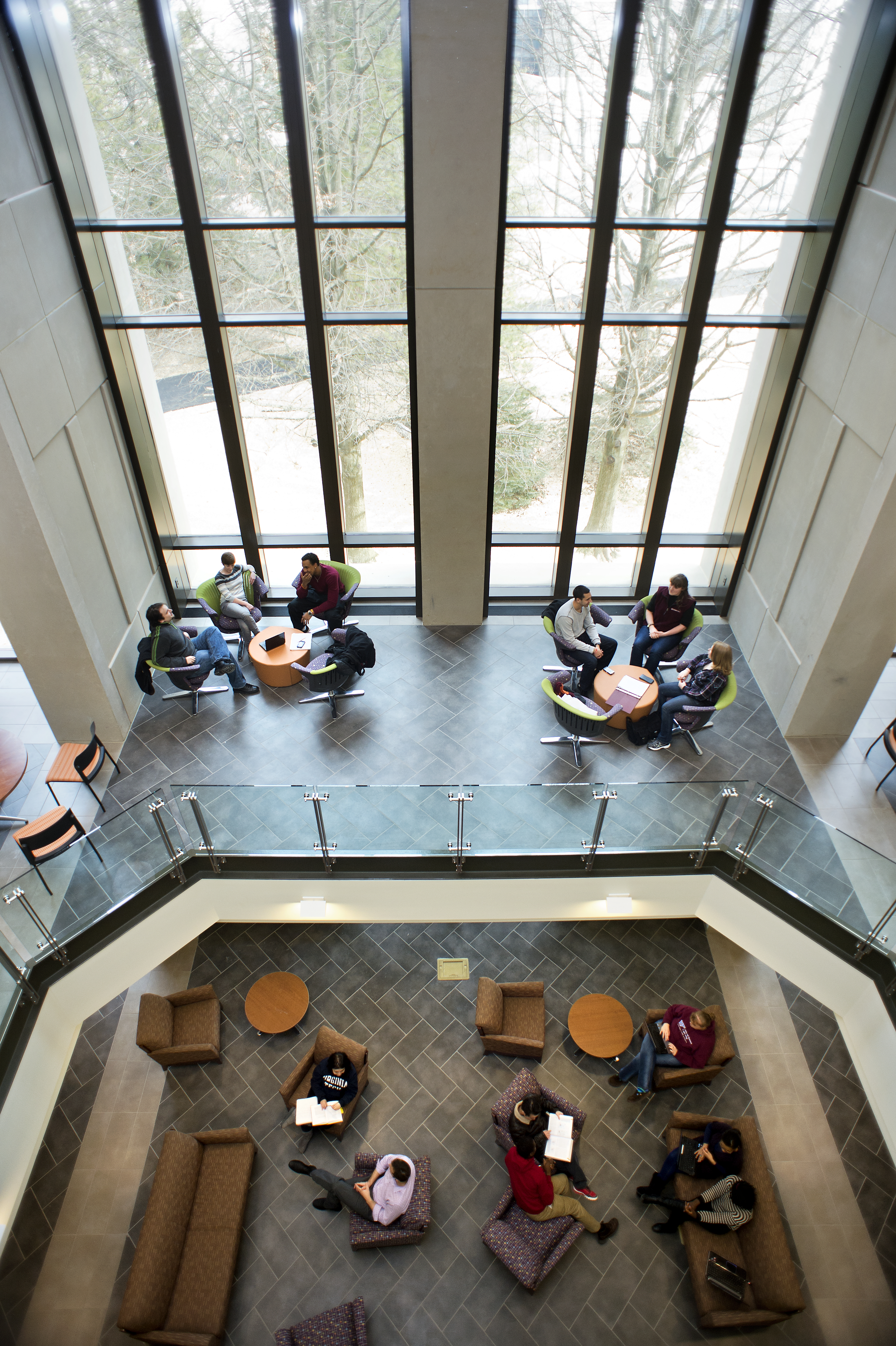New College of Agriculture and Life Sciences building creates scientific synergy

In the College of Agriculture and Life Sciences’ new Human and Agricultural Biosciences Building 1, researchers and students from multiple disciplines are collaborating on issues ranging from fermentation and food safety to bioprocessing and biofuels.
These synergistic relationships are allowing the college to expand its scientific reach to address critical issues concerning agriculture, food security, human health, and climate change that will impact people the world over.
“The research activities and discoveries made in the new building will become the cornerstone of programs that will directly benefit the citizens of the commonwealth and the agriculture, food, and health industries,” said Alan Grant, dean of the college. “The work that is happening in the new building will bring the promise of a healthy planet, healthy food, and healthy people.”
The $53.7 million building at the intersection of Duck Pond Drive and Washington Street is the first of four planned for the Biosciences Precinct where faculty members and students from various departments within the college will work together and further research, academic, and Extension efforts.
In the new building, scientists from the Department of Biological Systems Engineering are developing new sources of energy to power the world, building water delivery systems that ensure people have clean water, finding ways to combat addiction through novel vaccines, and creating new targeted drug delivery systems to fight diseases.
At the same time, researchers from the Department of Food Science and Technology are finding ways for industries to provide healthy food for the world through pasteurization, fermentation, packaging, emulsion stability, probiotic culture viability, ingredient technology, and product and process development.
The 93,860-square-foot building that is home to some of the most cutting-edge and advanced technologies available was constructed with common areas and shared spaces to increase creative collaboration.
“By having two departments, researchers, graduate students, and undergraduate students under one roof we will be able to create a synergy among scientists where ideas are shared, hypotheses are debated, and the challenges of the world are tackled,” said Saied Mostaghimi, associate dean of research for the college and director of the Virginia Agricultural Experiment Station.
Among the many new technologies in the building are state-of-the-art sensory panels, modern kitchen facilities, and a biosecurity level 2 food processing laboratory that will allow food science and technology researchers to work on issues that jeopardize safe, reliable food production, including E. coli and Salmonella outbreaks.
The new building will help scientists be more competitive as they apply for grants and funding. It will also help the college recruit top-notch students and faculty whose research requires state-of-the-art labs and equipment to solve the world’s most pressing problems.
Both the biological systems engineering and the food science and technology departments have seen tremendous growth in recent years as students choose disciplines that are rewarding and offer promising career paths. U.S. News and World Report ranked the biological systems engineering graduate curriculum eighth in the nation among biological and agricultural engineering programs in 2013.
The building will be LEED-certified, a designation given by the U.S. Green Building Council for structures that utilize the very best in energy and environmental design. From the first day workers broke ground on the new building, a host of sustainable methods and technologies were incorporated to support a high-performance, cost-effective, and environmentally sound project.
Asphalt from the old parking lot was recycled. Building materials were produced from renewable materials and wood used in the project came from a certified source to reduce the impact on forests. Low-emitting paints, sealers, and carpeting ensures clean air inside, and windows provide warm, natural light to reduce the amount of energy needed. The building’s placement on the lot was chosen to minimize harsh western sunlight while maximizing passive daylight via large bay windows. A complex network of computers monitors the temperature and environment, and water-saving fixtures and appliances are installed throughout. The flexible laboratory design of will allow for multiple uses over the years, saving on renovation costs and materials.
The grand opening of the Human and Agricultural Biosciences Building 1 is scheduled for Friday, March 21, at which time prominent members of the academic community will speak in honor of the event and tours of the building's facilities will be given. The event is free and open to the public.
“This is an exciting time for the college,” Grant said. “This new building and future Biosciences Precinct is going to help the agriculture and life sciences disciplines and industries thrive while looking ahead to the future to solve emerging challenges.”



